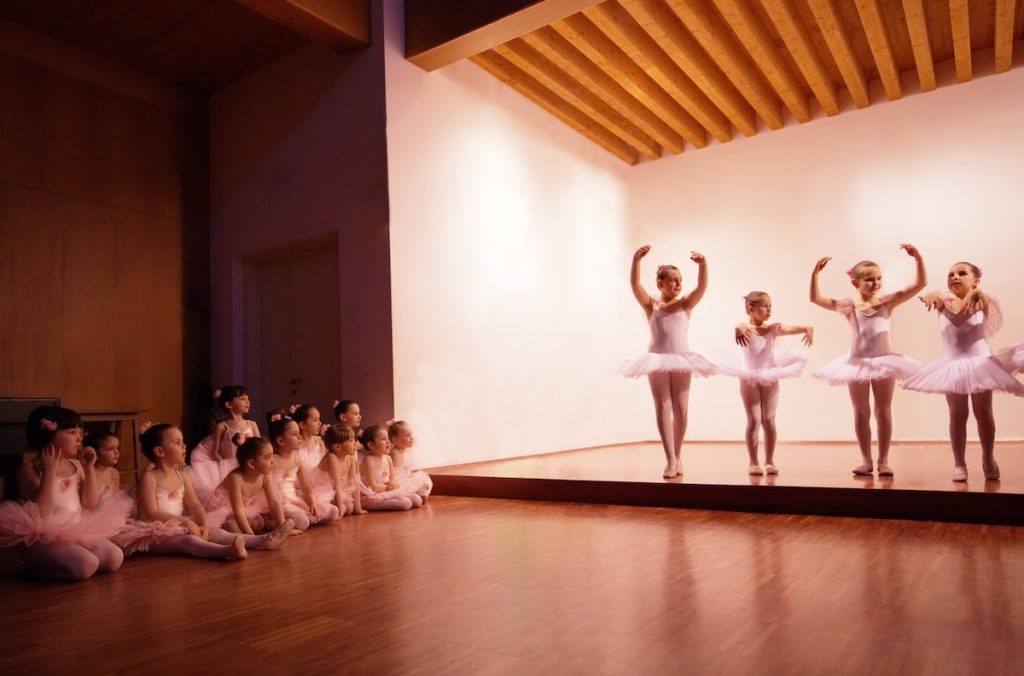Congratulations! Your little one has shown an interest in dance. Even better, you’ve found an excellent medium for top-quality dance instruction. But something’s missing, your kid needs some gear for their first lesson, right? Certainly, but there are quite a lot of options out there for various budgets and it can be pretty daunting just looking at what’s available in the large market of children’s dancewear and dance accessories. Here are some ideas to help your kid be ready and equipped for their first lesson.
Don’t stress yourself out about footwear
When dealing with beginners, comfort is important. And if you are uncertain whether your child will choose to go the distance, expensive footwear might end up being a frivolous expense. Your child will be perfectly prepared for their first lesson wearing socks, or even barefoot. And if you do choose to purchase some footwear for them, you don’t need to dive into the deep end by buying fancy pointe shoes. That can come later if your child decides to stick with instruction. For ballet or jazz classes simple ballet slippers and jazz shoes are perfectly acceptable–and preferred–for your little dancer.
Ease of movement is key
Dance clothes are fun, and for some little students an essential part of the excitement of entering the dance world. Kids love to play dress up, and some kids will definitely take their lessons more seriously if they have the right outfit. Dance is as much about imagination and creativity and theater as it is movement. However, the most fundamental truth about proper clothing for dance lessons is ease of motion. So if you purchase dancewear, go simple and focus on fit. Some dance studios will require a basic beginner’s uniform for each style. For ballet, it will often consist of pink tights, a black leotard, and possibly dance shoes. Be sure to check with your local studio before heading to your child’s first class. Leotards and tights are relatively inexpensive and can easily be unisex and appropriate for any gender. Make sure that your child feels comfortable in their clothes, both in terms of style and ease of movement. And although these accessories come later, if your kid wants to wear a tutu, let them. It isn’t an essential item for the beginner’s wardrobe but if it gets your junior Barishnokov or petite Pavlova into the spirit of the lesson then it can’t hurt.
It’s not a sport but it is athletic
Dance is a very physical activity built upon exercise and repetition. To learn to dance is to spend hours practicing foundational moves and building the muscle memory and strength required to make the difficult seem effortless. So, while your child might not be swinging at a ball or mounting a full-court press, dancing needs to be considered an athletic activity. Any child pursuing athletics needs support, nutritional and otherwise. Make sure that there are healthy snacks available for your little student for the after-lesson energy crash, and make hydration available before, during, and after their lesson as well. Kids sweat, so get some towels to wipe themselves down with, and if the child requires any special medication for exertion–like an asthma inhaler–make sure that is on hand and easy to access. It’s always a good idea to pack a little kit for your kid when they are on the move. Think of a dance lesson as a practice that can teeter between gentle and intense. And while the beginner’s experience isn’t likely to be too taxing, it doesn’t hurt to be prepared.
Feed the mind
If your child is developing an interest in dance, it’s important to remember that it doesn’t just start and end in the studio. There’s a world of age-appropriate books about each dance style out there to nurture your kid’s interest, and certainly no shortage of music. Children learn with their bodies and their minds, so make sure that you remember to accentuate and cultivate an active relationship with the world of dance. Introduce your kid to fun ballet music like The Nutcracker Suite or a cast album from a Broadway show, and as they enjoy the sounds they’ll begin to develop an intuitive understanding of the movement of ballet or musical theatre music. Remember: no one is too young to appreciate the gift of music and motion!

